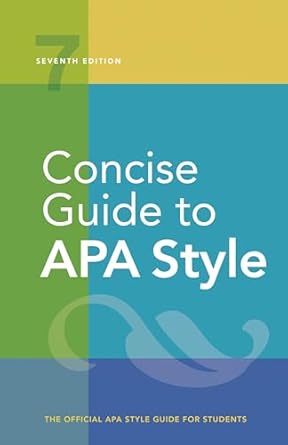[toc]
citations quotations a guide for accurate academic writing
Concise Guide to APA Style: 7th Edition (OFFICIAL)
Page 217 Review
The Importance of Proper Citation and Quotation in Academic Writing
This excerpt from an ebook on academic writing delves into the nuances of paraphrasing and direct quotations, emphasizing the importance of clarity and accuracy in attributing sources.
It highlights the situations where direct quotations are preferable and provides guidelines for formatting them correctly.
Understanding the Need for Repeated Citations
The passage begins by illustrating a scenario where repeated citations are necessary to clarify the sources of different ideas.
The example provided focuses on the symptoms of impaired wellness in play therapists:
“Play therapists can experience many symptoms of impaired wellness, including emotional exhaustion or reduced ability to empathize with others (Elwood et Robinson-Keilig, 2014), decreased satisfaction with work (Elwood et al., 2011), avoidance of particular situations (Figley, 2002; O’Halloran & Linton, 2000), and feelings or thoughts of helplessness (Elwood et al., 2011; Figley, 2002; O’Halloran & Linton, 2000), disruption in personal relationships (Elwood et al., 2011; O’Halloran & Linton, 2000).”
The note accompanying the example clarifies that the repeated citations are essential because “different combinations of works support different ideas—the sources change and thus must be made clear to readers.” This underscores the need for meticulous citation practices to avoid ambiguity and ensure that credit is given where it’s due.
Paraphrasing vs.
Direct Quotation: A Matter of Context
The ebook then transitions to a discussion of direct quotations, emphasizing that paraphrasing is generally the preferred method:
“A direct quotation reproduces words verbatim from another work or from your own previously published work.
It is best to paraphrase sources (see Sections 8.23-8.24) rather than directly quoting them because paraphrasing allows you to fit material to the context of your paper and writing style.”
This recommendation stems from the understanding that paraphrasing allows writers to integrate the source material more seamlessly into their own work, making it more coherent and accessible to the reader.
However, the passage acknowledges situations where direct quotations are necessary or even desirable:
“Use direct quotations rather than paraphrasing when reproducing an exact definition (see example in Section 4.15), when an author has said something memorably or succinctly, or when you want to respond to exact wording (e.g., something someone said).”
These exceptions highlight the importance of using direct quotations when the original wording is crucial to the meaning or impact of the statement.
For instance, reproducing an exact definition ensures that the term is understood precisely as the original author intended.
Similarly, quoting a memorable or succinct statement preserves its unique quality and impact.
Formatting Direct Quotations: Author, Year, and Page Number
The passage provides clear guidelines for formatting direct quotations, emphasizing the inclusion of the author, year, and page number in the in-text citation:
“When quoting directly, always provide the author, year, and page number of the quotation in the in-text citation in either parenthetical or narrative format (see Section 8.11).
To indicate a single page, use the abbreviation “p.’ (e.g., p. 25, p.
S41, p. e221); for multiple pages, use the abbreviation “pp.” and separate the page range with an en dash (e.g., pp. 34-36).
If pages are discontinuous, use a comma between the page numbers (e.g., pp. 67, 72).
Ifthe work does not have page numbers, provide another way for readers to locate the quotation (see Section 8.28).”
These guidelines ensure that readers can easily locate the original source of the quotation, allowing them to verify the accuracy of the citation and explore the context in which the statement was made.
The passage also addresses the specific formatting for single pages, multiple pages, and discontinuous pages, demonstrating attention to detail and a commitment to clarity.
The Importance of Following Guidelines
Overall, this excerpt emphasizes the importance of proper citation and quotation in academic writing.
By understanding the nuances of paraphrasing and direct quotations and following the established formatting guidelines, writers can ensure that their work is accurate, credible, and respectful of intellectual property.
This promotes academic integrity and allows readers to engage with the material in a meaningful and informed way.
The mention of instructors and institutions setting limits underscores the importance of adherence to specific guidelines.
Buy full ebook for only $18: https://www.lulu.com/shop/american-psychological-association/concise-guide-to-apa-style-7th-edition-official/ebook/product-rmzpq54.html?page=1&pageSize=4

